Recognizing stress in cats can be challenging, as they often mask their discomfort until it becomes severe. As a responsible pet owner, it's essential to understand the subtle and not-so-subtle signs of stress in your feline friend. Stress can manifest through various symptoms, ranging from behavioral changes such as hiding or aggression to physical signs like overgrooming or changes in eating habits. Identifying these signs early can proactively alleviate your cat's stress and enhance their well-being.
In this blog post, we will guide you through the common symptoms of cat stress, helping you understand your cat's body language and how to respond to ensure your cat remains happy, healthy, and stress-free effectively.
Behavioral Changes
Hiding
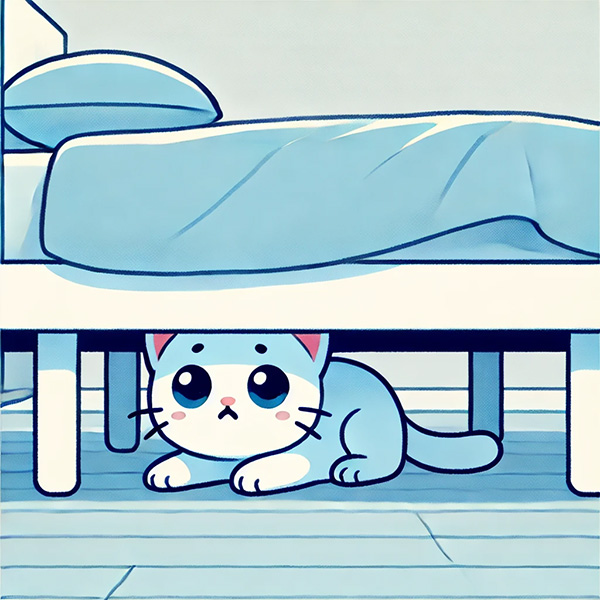
When cats feel stressed or threatened, hiding is a common behavior they may exhibit. This instinctual response is rooted in their need for safety and security. When experiencing cat anxiety or stress, a cat might hide under furniture, in a closet, or in other secluded spots around the home. This behavior can arise from a variety of factors, including loud noises, the presence of unfamiliar individuals, or alterations in their environment.
As a pet owner, noticing an increase in your cat's hiding behavior should prompt a gentle response. Offer a secure area where your cat can comfortably retreat, and make efforts to reduce stressors in their environment. Gradually introducing stress management techniques and ensuring a calm, stable environment can help your cat feel more secure and reduce the need for excessive hiding.
Aggression
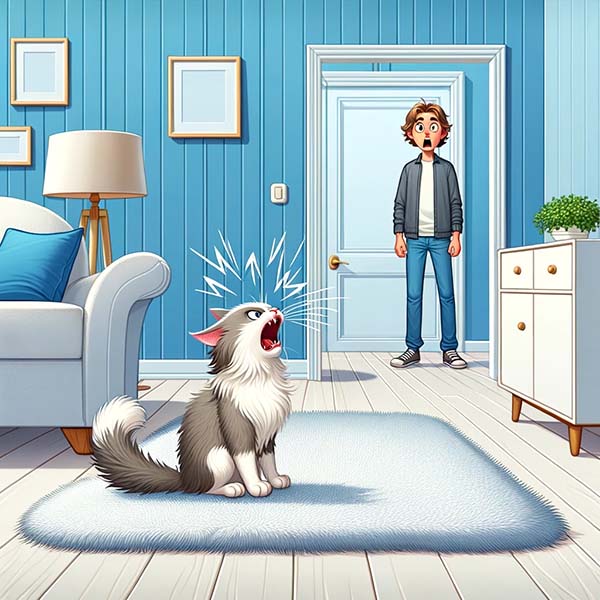
Aggression in cats can frequently indicate underlying stress. When cats feel threatened or uneasy, they might exhibit aggressive behaviors like hissing, swatting, or biting. This can be directed towards other pets, strangers, or even their familiar humans. Factors contributing to this aggression could include territorial disputes, fear, unfamiliar cats intruding, or changes within their environment, like a new pet or moving furniture.
To tackle this issue, it's essential to identify and alleviate the stressors causing the aggression initially. Creating a tranquil and secure environment and allocating dedicated spaces for your cat to retreat and unwind are crucial steps. Engaging in regular, gentle play can also help alleviate stress and reduce aggressive tendencies, promoting a more peaceful behavior.
Decreased Appetite
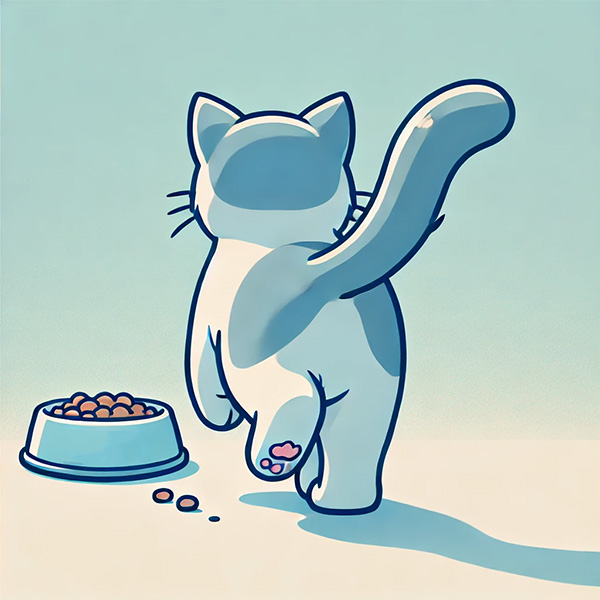
A decreased appetite is a notable sign that your cat may be experiencing stress. When cats feel anxious or uneasy, they often lose interest in food, quickly impacting their overall health. This reduction in eating can stem from various sources of stress, such as environmental changes, conflicts with other pets, or even disturbances in their daily routine.
Pet owners must observe their cat's eating patterns closely. If you notice a persistent lack of appetite, consider potential stressors affecting your cat and work to alleviate them. Ensuring a tranquil, stress-free eating environment and sticking to a consistent feeding schedule can be beneficial. Also, make sure there are enough food bowls in a multi-cats household. If the issue persists, it is advisable to consult a veterinarian to rule out any underlying health issues and discuss further steps to support your cat’s well-being.
Overgrooming
Overgrooming is a common sign of stress in cats. It manifests as excessive licking, chewing, or pulling out fur, which can lead to bald patches or skin lesions. This behavior often starts as a self-soothing activity that helps calm nervous cats, but it can escalate into a compulsive disorder if the underlying stress is not addressed. Factors triggering overgrooming might include changes in the household, anxiety from environmental noises, or the presence of new pets or people.
To help manage this behavior, first ensure that your cat's environment is calm and stable. Provide enrichment such as toys and scratching posts, and consider setting up a safe space where your cat can retreat to feel secure. If overgrooming persists, consult a veterinarian to explore further behavioral strategies or potential medical interventions.
Changes in Litter Box Habits
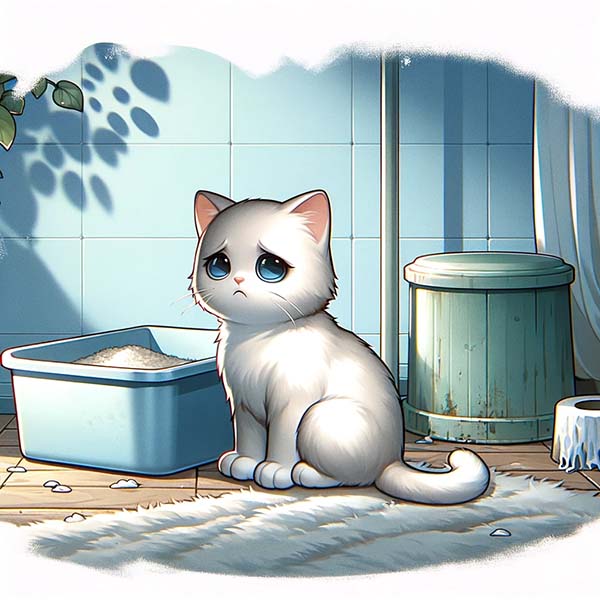
Changes in litter box habits clearly indicate stress in many cats. When stressed, cats may start urinating or defecating outside their litter boxes or use them less frequently. Various stressors, including changes in the household environment, conflicts with other pets, or discomfort with the location or cleanliness of the litter tray itself can trigger such behaviors.
To address this issue, ensure the litter box is in a quiet, accessible location and maintain its cleanliness by scooping daily and changing the litter regularly. For indoor-only cats, consider the number of litter boxes available—having one more box than the number of cats in the home can prevent stress. If the issue persists, seek advice from a veterinarian to eliminate medical causes and explore additional behavioral interventions.
Physical Signs
Digestive Issues
Digestive issues in cats, such as diarrhea, constipation, or vomiting, can often be signs of stress. When cats are stressed, their body's natural response may disrupt normal digestive function, leading to these uncomfortable conditions. Possible stressors could encompass environmental changes, such as relocating to a new home, shifts within the household dynamics, or even changes in their diet.
First, ensure that your cat's living environment is as calm and stable as possible to address these symptoms. Offer designated areas where your cat can retreat and feel secure. Maintaining a consistent feeding schedule with a well-balanced diet is also important. If digestive symptoms persist, it is crucial to consult with a veterinarian to rule out any underlying medical conditions and to discuss further dietary recommendations or stress-reduction strategies.
Changes in Grooming Habits
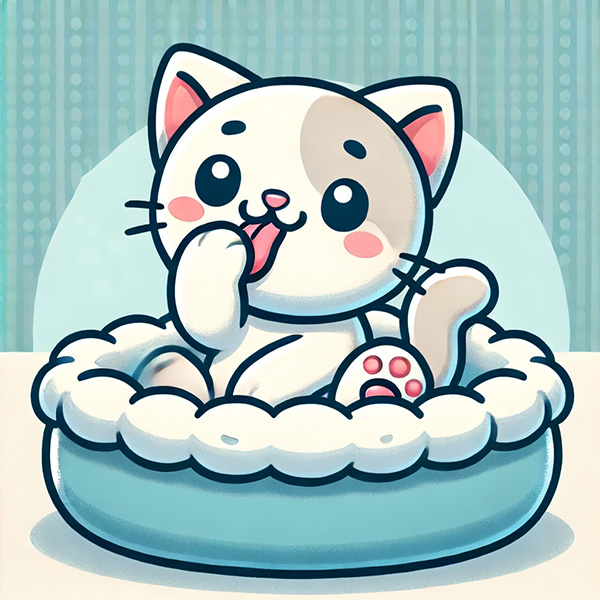
Alterations in grooming habits are significant indicators of stress in cats. When stressed, some cats may neglect their grooming, leading to a disheveled appearance, while others might over groom, resulting in bald patches or skin irritations. Such changes can stem from various stressors, including environmental disruptions, social tensions, or health issues.
To address this, observe the environment for potential stress triggers and make adjustments to enhance comfort and security for your cat. Providing a stable routine and quiet places for grooming can help. Additionally, interactive play and soothing interactions can reduce stress levels. If grooming irregularities continue, it's crucial to seek guidance from a veterinarian to exclude any medical concerns and to explore potential behavioral or environmental adjustments.
Physical Symptoms
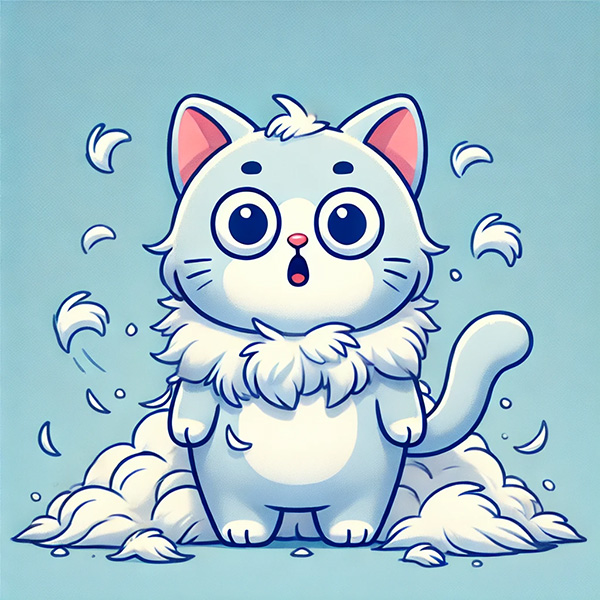
Physical symptoms such as panting, trembling, weight loss, weight gain, or excessive shedding can be clear signs of stress in cats. These symptoms often manifest when a cat is experiencing acute stress or anxiety, potentially triggered by loud noises, unfamiliar environments, other cats, or sudden changes within their living space. If your cat's physical health is changing, such as weight loss, it's important to consult your veterinarian right away.
To assist your cat in coping with stress, establish a tranquil environment with minimal loud disruptions and offer secure hiding spots where your cat can seek refuge and feel secure. Consistent routines and gentle handling can also reassure a stressed cat. It’s crucial to monitor these physical signs closely; if they persist or worsen, consult a veterinarian to rule out underlying medical issues and discuss possible stress-reduction strategies tailored to your cat’s specific needs.
